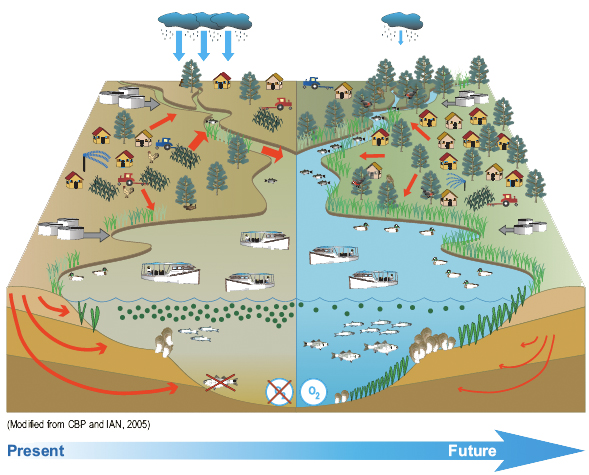Relationship between land use and water quality
Increasing human populations have caused land use changes from forest to agricultural and urban areas, and these changes in turn have resulted in greater freshwater flows and increased fluxes of particulates (sediments), nutrients (Nitrogen and Phosphorus) from watersheds to estuaries and coastal waters. Increased loading of particles promotes turbidity and sedimentation, and increased loading of Nitrogen and Phosphorus increases phytoplankton biomass production resulting in eutrophication (algal bloom), which also further reduces water clarity. These changes have contributed to losses of submerged aquatic vegetation (SAV), augmented organic loading of bottom waters, and increased oxygen demand, leading in some cases to hypoxia or anoxia.
Fig 1: The following figure summarizes the relationship between land use and water quality.




